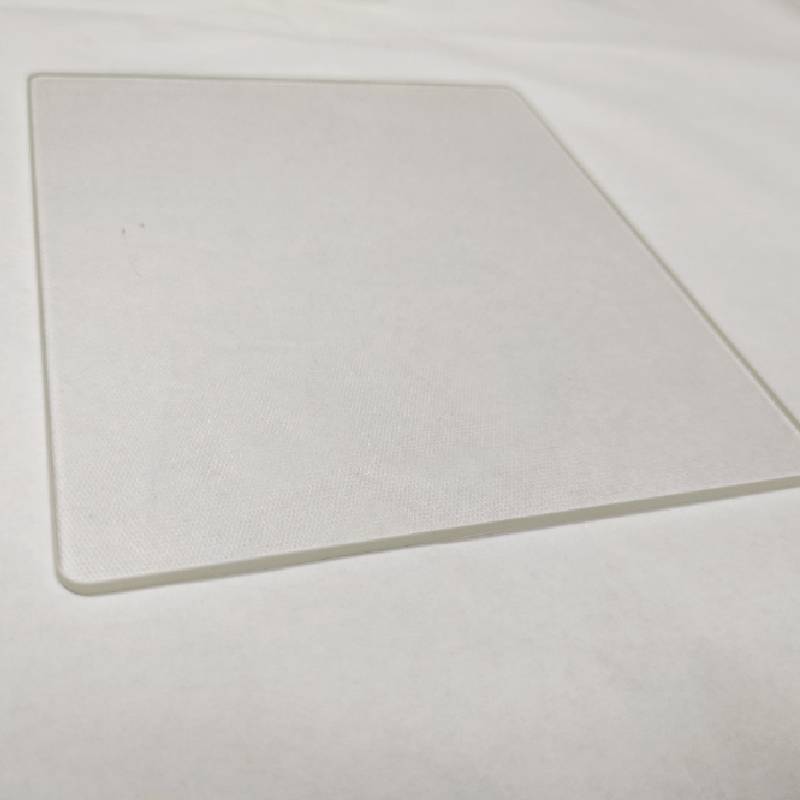Understanding the Pricing of Glass Tempered Factors and Trends
The market for tempered glass has seen significant growth in recent years, influenced by a plethora of factors ranging from safety regulations to design innovation. When discussing glass tempered prices, it is crucial to understand the contributing elements that affect its cost, the benefits it provides, and the market trends shaping its future.
What is Tempered Glass?
Tempered glass, often referred to as toughened glass, is produced through a process of extreme heating and rapid cooling. This treatment makes the glass much stronger than standard glass, enabling it to withstand significant impact and thermal stress. The manufacturing process not only enhances strength but also ensures that, if broken, it shatters into small, blunt pieces rather than sharp shards, making it safer for both residential and commercial applications.
Factors Affecting the Price of Tempered Glass
1. Raw Materials The initial costs of raw materials such as silica sand, soda ash, and limestone play a significant role in determining the price of tempered glass. Fluctuations in the market for these raw materials can directly impact overall pricing.
2. Manufacturing Processes The complexity of the manufacturing process can also influence prices. Advanced techniques, such as low-emissivity (Low-E) coating or specific customizations (e.g., colored or patterned glass), can increase production costs and subsequently affect retail prices.
3. Thickness and Size Tempered glass is available in various thicknesses and sizes. Larger sheets or thicker glass are not only more expensive to produce but also pose higher shipping and handling costs, all of which contribute to the final pricing.
4. Transportation and Logistics Given the fragile nature of glass, the cost of transportation and logistics also plays a vital role in its final pricing. Companies must ensure that tempered glass is properly packaged and handled to avoid breakage, which adds to overall expenses.
glass tempered price
5. Market Demand The demand for tempered glass has surged with the rise in construction activities and the growing popularity of modern architectural designs. A high demand often translates to higher prices, especially in regions experiencing rapid development.
6. Regulatory Standards Compliance with safety and building regulations can also impact pricing. Regions with stringent safety codes may require higher-quality tempered glass, necessitating extra testing and certification, ultimately affecting costs.
Market Trends Influencing Prices
Over the past few years, the tempered glass market has experienced trends that have shaped its pricing landscape. One significant trend is the increasing use of tempered glass in energy-efficient windows and solar panels, driven by a global push for sustainability. This demand for green building materials has led manufacturers to invest in technology that makes production more efficient, albeit at a higher initial cost which could be passed onto consumers.
Another trend is the customization of tempered glass products; as architects and designers strive for unique aesthetics, the need for customized solutions has surged. This shift often leads to increased prices for bespoke tempered glass items.
Conclusion The Future of Tempered Glass Pricing
As consumer awareness of safety and aesthetic values rises, tempered glass is increasingly becoming a preferred material in construction and design. While the prices of tempered glass may fluctuate based on various factors including raw materials, production costs, and market demand, the overall trend indicates a steady growth in value.
The use of tempered glass is expected to expand into newer applications, including smart glass technologies for smart homes and buildings, which may further influence pricing dynamics in the future. As the market evolves, staying informed about these factors will be crucial for consumers, builders, and designers alike.
In summary, understanding the pricing of tempered glass is about recognizing the interplay of manufacturing costs, market trends, and consumer demands. By staying informed, stakeholders can make better investment decisions, ensuring they harness the full potential of this versatile material in a world increasingly focused on safety and design integrity.
 Afrikaans
Afrikaans  Albanian
Albanian  Amharic
Amharic  Arabic
Arabic  Armenian
Armenian  Azerbaijani
Azerbaijani  Basque
Basque  Belarusian
Belarusian  Bengali
Bengali  Bosnian
Bosnian  Bulgarian
Bulgarian  Catalan
Catalan  Cebuano
Cebuano  Corsican
Corsican  Croatian
Croatian  Czech
Czech  Danish
Danish  Dutch
Dutch  English
English  Esperanto
Esperanto  Estonian
Estonian  Finnish
Finnish  French
French  Frisian
Frisian  Galician
Galician  Georgian
Georgian  German
German  Greek
Greek  Gujarati
Gujarati  Haitian Creole
Haitian Creole  hausa
hausa  hawaiian
hawaiian  Hebrew
Hebrew  Hindi
Hindi  Miao
Miao  Hungarian
Hungarian  Icelandic
Icelandic  igbo
igbo  Indonesian
Indonesian  irish
irish  Italian
Italian  Japanese
Japanese  Javanese
Javanese  Kannada
Kannada  kazakh
kazakh  Khmer
Khmer  Rwandese
Rwandese  Korean
Korean  Kurdish
Kurdish  Kyrgyz
Kyrgyz  Lao
Lao  Latin
Latin  Latvian
Latvian  Lithuanian
Lithuanian  Luxembourgish
Luxembourgish  Macedonian
Macedonian  Malgashi
Malgashi  Malay
Malay  Malayalam
Malayalam  Maltese
Maltese  Maori
Maori  Marathi
Marathi  Mongolian
Mongolian  Myanmar
Myanmar  Nepali
Nepali  Norwegian
Norwegian  Norwegian
Norwegian  Occitan
Occitan  Pashto
Pashto  Persian
Persian  Polish
Polish  Portuguese
Portuguese  Punjabi
Punjabi  Romanian
Romanian  Russian
Russian  Samoan
Samoan  Scottish Gaelic
Scottish Gaelic  Serbian
Serbian  Sesotho
Sesotho  Shona
Shona  Sindhi
Sindhi  Sinhala
Sinhala  Slovak
Slovak  Slovenian
Slovenian  Somali
Somali  Spanish
Spanish  Sundanese
Sundanese  Swahili
Swahili  Swedish
Swedish  Tagalog
Tagalog  Tajik
Tajik  Tamil
Tamil  Tatar
Tatar  Telugu
Telugu  Thai
Thai  Turkish
Turkish  Turkmen
Turkmen  Ukrainian
Ukrainian  Urdu
Urdu  Uighur
Uighur  Uzbek
Uzbek  Vietnamese
Vietnamese  Welsh
Welsh  Bantu
Bantu  Yiddish
Yiddish  Yoruba
Yoruba  Zulu
Zulu 

